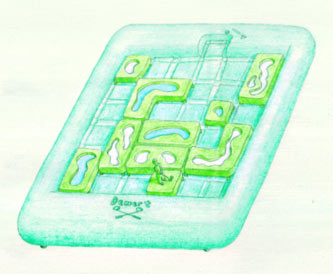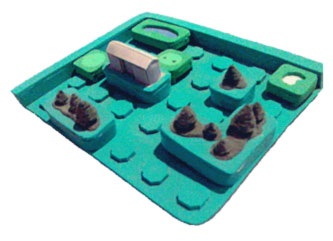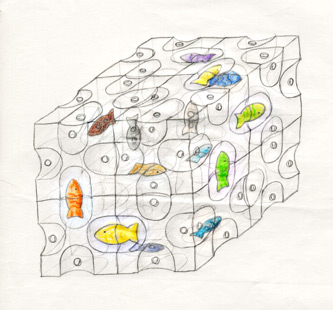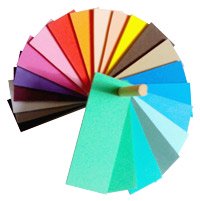|
Game and Toy Idea, what to avoid recourse
This may seem like a logical approach, but unfortunately these very successful games have been around for a long time and variations have been thrashed, probably by the original inventors and certainly by the general public. Even if they haven't most Companies wouldn't be interested because they get hundreds of game or toy ideas shown to them every year like this and a variation concept of something they are already selling just wouldn't interest them. It takes at least $100,000 investment into a typical board game to fully develop it, so putting that kind of investment into something that isn't that different to something they already have and would probably decrease sales of the original product, obviously wouldn't interest them. I thrashed variations to Twister, developing a hand version and every other version l could think of, but because of the reasons already given it failed (and interestingly enough a version similar to one of my ideas was released, by a small overseas Toy Company l hadn't approached). I also developed a variation to “Rush Hour” a Binary Arts (Thinkfun) game, that uses small plastic cars, trucks on a grid and you need to figure out how to move the cars, trucks around to get the red car out.
My version was a Golf course with a small man on the movable platform looking like he was teeing off, which included sand traps, water hazards, trees and a clubhouse on other platforms. The object was similar, move the other blocks around so the man- block could be pushed off the board. David and l thought that it was a great toy idea,
As stated earlier most people develop 1 to 3 game or toy ideas then give up, which is a pity because with this information behind them and persistence they could have dramatically increased their chances, certainly by enough to keep trying. Also another area to avoid is what l like to call “Classic Plastic board games” like Mousetrap, a game where you construct a mousetrap in the middle of a board and when it is completed, who ever lands on the wrong space with their plastic mouse under a trap mechanisms gets trapped by one of the other players turning a wheel, etc. l spent months coming up with every variation l could think of for that game, including Hungry Hippos and many more that involved large plastic sets.
Unfortunately this is a very difficult area to break into because of the huge cost of plastic extrusion (processing the plastic pieces). Most Companies obviously want to maximise profits and keep costs down, so anything more than standard (off the shelf) plastic playing pieces and a standard cardboard playing surface probably will not spark their interest, unless it is an exceptional idea and worth the expense. Also as stated previously you don't have to put massive effort into showing your game or toy ideas to someone, a quick sketch is enough. They will employ their own Graphic artist for the final design if accepted. It allows you to create 3D models, including shadows, surface textures, custom built objects, etc; as well as being able to save, print and create a 3D movie. The download is "free" and all the video tutorials, etc are free of charge. It's a great recourse, but remember most of the time a pencil drawing will do (although there was a time when l needed to draw a complex idea before David went overseas, l wasn't able to speak to him and it was misinterpreted)! If you are not an artist talking to a friend who is, or going to a professional is the best option if professional designs are required, but talk to your Toy Company first as you may be able to negotiate on the costs you are incurring or renegotiate your contract for a higher percentage. If you are strapped for cash going to your local College and finding a student what wants to become a Graphic artist, and would agree to work for you at a discounted rate or for free for a percentage of the royalties if successful is a great way of reducing costs and risk.
When a design reaches the stage where a model or prototype needs to be made the best and cheapest material l have found is coloured foam sheets. You can usually buy them as A4 sheets at most craft shops. A sharp craft knife and glue gun is a great investment but normal glue will suffice. I built the “Rush Hour” golf variation using coloured foam sheets and the 3D Stacking Jigsaw l discussed earlier. Also using Craft wire (which is usually used for tying flowers arrangements up with), is great for making parts that move in your models. Some other areas to avoid are thinking games or games where people have to create something without predefined parameters (free thinking). An example is a game where you have to develop a better mousetrap by thinking up something, instead of picking one of 3 different versions of a better mousetrap on a card. Most people find thinking up something new when playing a board game to be stressful and not much fun. Other things to avoid are games that are too complicated to understand, “Monopoly” is the exception to the rule, but most of the time if people can't grasp the concept within 30 seconds they probably won't buy. People are too busy and too stressed to spend their valuable time trying to figure out a new board game when another game is much easier to grasp. When you develop expensive or complicated plastic puzzles most of the time they will fail, even before you have shown them to anyone, because of the cost and risks involved. Usually if it's complex and involves a lot of plastic it won't be accepted, so staying with cardboard and paper concepts as much as possible, is the best area to stay in to maximise your chances of success. The best area with the highest chance of success in my opinion is board games that revolve around fun concepts with a strong human element. Most of the examples come from the 2 brothers who developed Imaginiff, a game where players imagine what you would most likely do, or say if you were something or doing something. Another example by the same 2 brothers is Moods where you may say “go ahead, make my day”, while acting like Marilyn Munroe and other players have to figure out who and what you are. But as stated before most Toy Company's don't like charade type games so avoid or minimise this aspect as much as possible. I believe that this is the area with the most potential and is the area l try to stay in as much as possible. You need to think outside the box as much as possible and a good book on lateral thinking wouldn't be a bad investment. Most successful game or toy ideas were created from ideas that were already created, but distant enough to be accepted. The Rubik's Cube concept has been around for hundreds of years with wooden blocks, before Rubik figured out how to mechanically make it work. Also asking the person you are seeing if it would be ok to take a look at any puzzle books they may have is a great way of developing an idea, or ideas as “Thread the Maze” has shown. If you want to develop a jigsaw ask the person you are seeing about ideas they are developing or have developed. Because it may seem that there are few or no ideas left in this area, but as l learned from asking, there are quite a lot of ideas left in this field and it gives you ideas to think about and not think about. |




